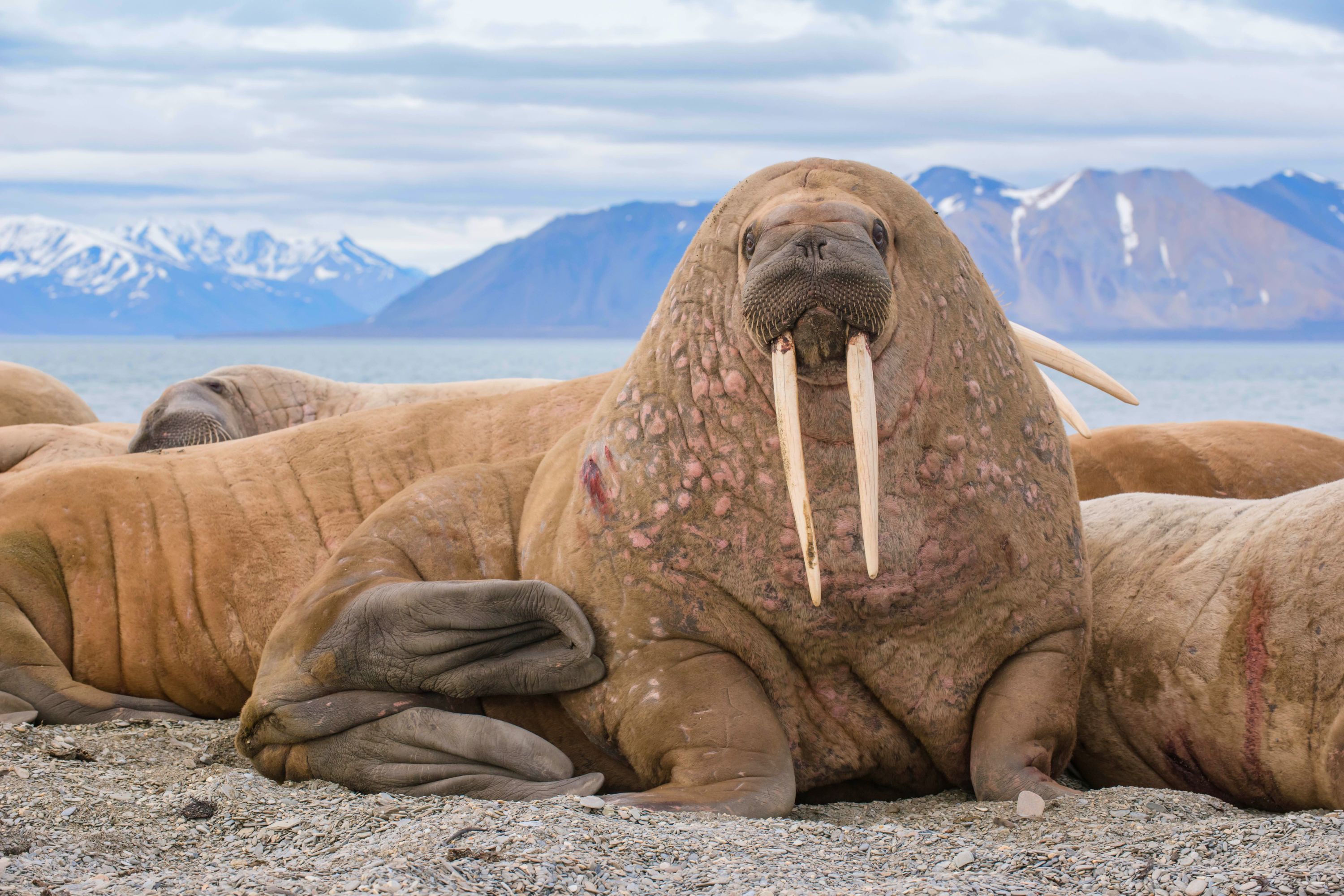Scientists Discovered A New Species Of Ancient, Extinct Walrus That Once Lived In The North Sea About Two Million Years Ago

Walruses are known for their long tusks and fuzzy, mustached faces, but a recently discovered species looks a little different from the image of walruses that we’re used to.
The new species of ancient walrus is now extinct and once lived in the North Sea. Its discovery shows how walruses evolved to become expert suction feeders.
The ancient walrus belongs to the genus Ontocetus and was discovered by a team of paleontologists led by Dr. Mathieu Boisville from the University of Tsukuba in Japan.
The find has captured the attention of researchers because of its surprising similarities to the modern walrus (Odobenus rosmarus).
The new species has been named Ontocetus posti. Its fossils were uncovered in Norwich, United Kingdom, and Antwerp, Belgium, from the Lower Pleistocene deposits in the North Atlantic. Initially, it was believed the remains belonged to another species, Ontocetus emmonsi.
However, a more thorough analysis revealed a distinct combination of features that confirmed it as a new species.
The features consisted of four post-canine teeth, a larger lower canine, and a fused and shorted mandibular symphysis. The fused jaw was similar to that of modern walruses, allowing them to suck mollusks out of a shell. This shows that O. posti was well-adapted to suction feeding.
It took millions of years for walruses to develop the ability to suction feed. The process began with the loss of teeth in ancestors. The remaining teeth flattened out to feed on shells more easily. Now, the only teeth that remain are the upper canines, which developed into the iconic tusks we know today.
The Ontocetus genus originated from the North Pacific Ocean and spread to the Atlantic during the Mio-Pliocene transition. A crucial oceanic passage known as the Central American Seaway likely facilitated their migration.
mikhail cheremkin – stock.adobe.com – illustrative purposes only, not the actual walrus
Sign up for Chip Chick’s newsletter and get stories like this delivered to your inbox.
For a time, walruses thrived, but around three million years ago, everything changed. The Isthmus of Panama formed between North and South America, closing off the seaway.
Global cooling started during the Late Pliocene, causing sea levels to drop as the water froze to become polar ice caps.
Marine life was significantly impacted, and most of the world’s walruses died out, including O. posti. They became extinct during the Early Pleistocene around 1.7 million years ago, giving rise to the cold-adapted modern walrus.
“Walruses like Ontocetus depend on shallow water to find food in, so as sea levels fell, these habitats would have slowly disappeared,” said Dr. James Rule, an expert on seals and their relatives at the Natural History Museum.
“The wider climate changes are also thought to have affected mollusk populations, leaving these specialists with less and less to eat.”
Currently, O. rosmarus is the only living member of its family. Although O. rosmarus and O. posti are separated by millions of years, they share similar characteristics and lifestyles.
Overall, the discovery highlights how changes in the environment shape the survival of walrus species.
Welcome to Billionaire Club Co LLC, your gateway to a brand-new social media experience! Sign up today and dive into over 10,000 fresh daily articles and videos curated just for your enjoyment. Enjoy the ad free experience, unlimited content interactions, and get that coveted blue check verification—all for just $1 a month!
Account Frozen
Your account is frozen. You can still view content but cannot interact with it.
Please go to your settings to update your account status.
Open Profile Settings